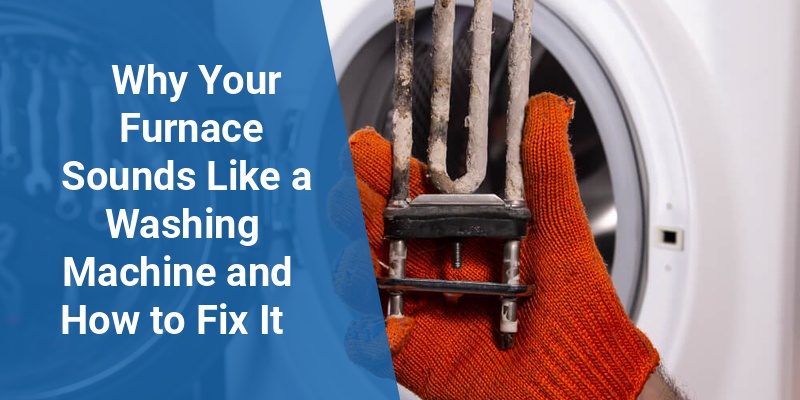When a furnace begins to make unusual sounds, such as noises resembling a washing machine, it can cause concern for homeowners. These sounds often indicate mechanical issues that require timely attention to avoid costly repairs or complete system failure. This article explores the common reasons why a furnace might emit sounds similar to a washing machine, provides detailed troubleshooting tips, and discusses when professional intervention is necessary.
| Furnace Noise Type | Possible Cause | Recommended Action |
|---|---|---|
| Vibrating or Rattling | Loose panels or blower motor issues | Tighten panels and inspect blower assembly |
| Thumping or Banging | Delayed ignition or duct expansion | Check ignition system; contact technician if persistent |
| High-Pitched Whining | Worn blower belt or motor bearings | Replace belts or lubricate bearings |
| Water-Like Swishing | Condensate drainage problems | Clear drains to prevent blockages |
Common Causes of a Furnace Making Washing Machine Sounds
Unusual noises from a furnace often signify mechanical or airflow problems. One common source of sounds that mimic a washing machine is loose or vibrating parts. For instance, if panels are not securely fastened, they can create a rattling noise as the unit operates.
Additionally, the blower motor can contribute to these sounds. A worn or unbalanced blower wheel can generate vibrations that shake the furnace housing, producing repetitive noises similar to a washing machine cycle. Motor bearings that lack lubrication may also create whining or grinding noises.
Delayed ignition is another cause, where the furnace ignites moments after the gas valve opens, causing a thumping or banging sound. This delay can contribute to irregular operational noises that might be confused with a washing machine’s mechanical sounds.
How Blower Motor and Fan Components Affect Furnace Noise
The blower motor and fan assembly play a crucial role in the sound profile of any heating system. When fan blades become dirty or unbalanced, they can wobble during rotation, leading to vibrations and repetitive knocking noises.
Moreover, if the blower motor is malfunctioning due to worn bearings or electrical issues, the motor may emit a high-pitched whine. This whine can combine with the mechanical vibrations to resemble the sound of a washing machine cycle, especially when paired with other mechanical irregularities.
Steps to Inspect the Blower and Fan Assembly
- Turn off power to the furnace for safety.
- Remove access panels and visually inspect for debris or damage on the fan blades.
- Check for loose screws or mounts that secure the blower assembly.
- Spin the blower wheel manually to assess if it moves smoothly and is balanced.
- Lubricate motor bearings if serviceable, following manufacturer guidelines.
The Impact of Ductwork and Vibration on Furnace Sounds
Improperly supported or loose ductwork can amplify and alter furnace sounds. Vibrations from the furnace components can travel through metal ducts, creating echoing noises comparable to a washing machine’s spin cycle.
Call 888-906-9139 for Free Local HVAC Quotes – No Obligation, Just Savings!
Duct expansion and contraction during heating cycles may cause popping or knocking sounds, which sometimes blend with the humming and vibrations of the running furnace.
Maintaining Ductwork to Reduce Noise
- Inspect ducts for loose connections and secure them with metal tape or fasteners.
- Install duct insulation or vibration dampeners to reduce noise transmission.
- Seal any leaks that might cause airflow disturbances, contributing to irregular sounds.
Diagnosing and Fixing Condensate Drainage Issues
High-efficiency furnaces produce condensate water that drains through piping similar to that found in air conditioners. If this drainage system becomes clogged or improperly installed, it can create gurgling or sloshing noises akin to a washing machine.
Regular maintenance of the condensate drain line is essential to prevent blockages and ensure quiet operation. Failure to clear these lines may also cause water leaks that can damage furnace components or home structures.
How to Maintain Condensate Drain Lines
- Inspect drain lines monthly during heating season.
- Use a wet/dry vacuum or compressed air to clear blockages.
- Ensure proper slope of the drain line to facilitate water flow.
- Replace cracked or deteriorated piping promptly.
When to Call a Heating Professional
While some furnace noises can be resolved with basic DIY troubleshooting, persistent or severe sounds resembling a washing machine warrant professional evaluation.
Warning signs include:
- Persistent rattling or banging that doesn’t improve after tightening panels.
- Visible signs of wear or damage on blower motor or fan components.
- Ignition delays or irregular burner operation.
- Unexplained water leaks or condensate problems.
- Electrical issues such as frequent cycling or failure to start.
A licensed HVAC technician can perform advanced diagnostics, safely repair complex issues, and ensure the furnace operates efficiently and quietly.
Preventive Maintenance Tips to Reduce Furnace Noise
Regular furnace maintenance plays a vital role in minimizing unusual operational sounds. Scheduled servicing can catch issues before they escalate, ensuring both comfort and safety within your home.
Call 888-906-9139 for Free Local HVAC Quotes – No Obligation, Just Savings!
- Change or clean air filters every 1 to 3 months to maintain airflow.
- Inspect and tighten panels, screws, and mounting brackets seasonally.
- Clean blower assemblies and lubricate motors according to manufacturer recommendations.
- Keep the condensate drain lines clear and dry.
- Schedule annual professional furnace inspections and tune-ups.
